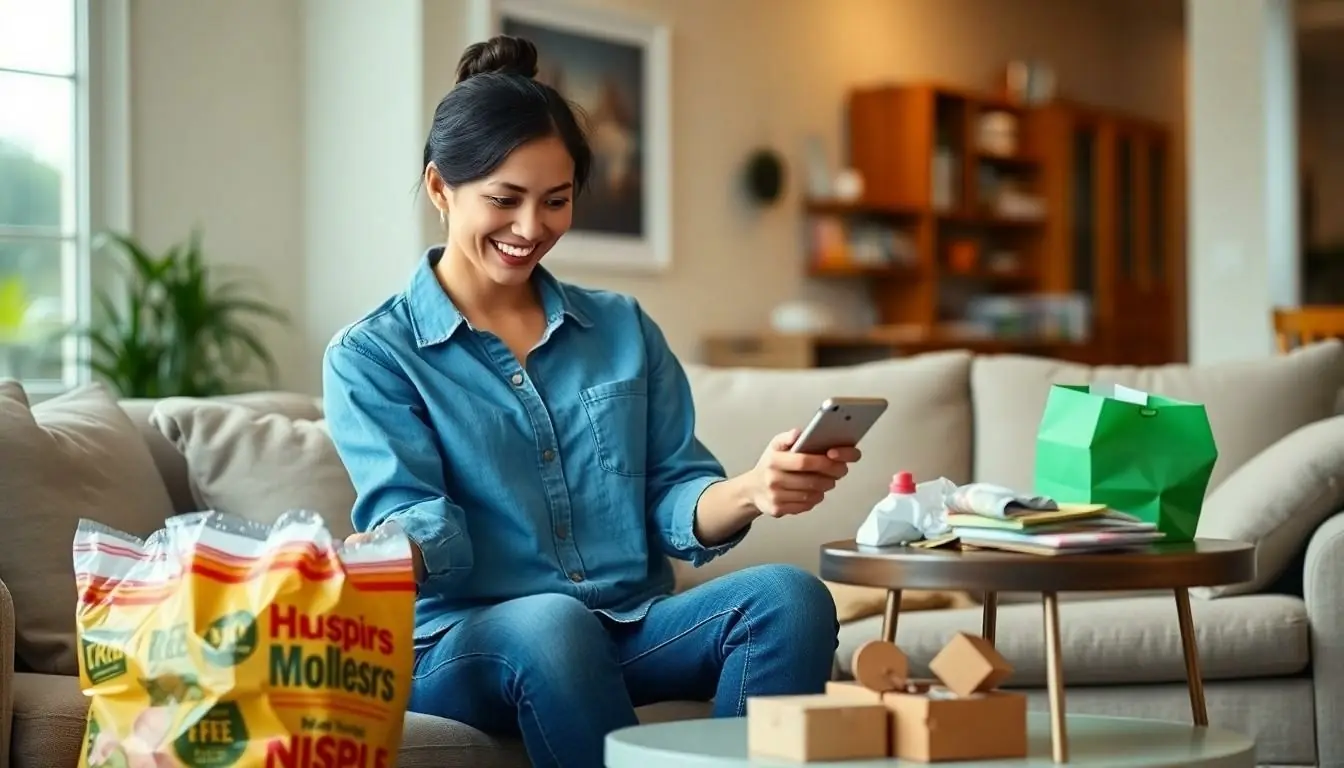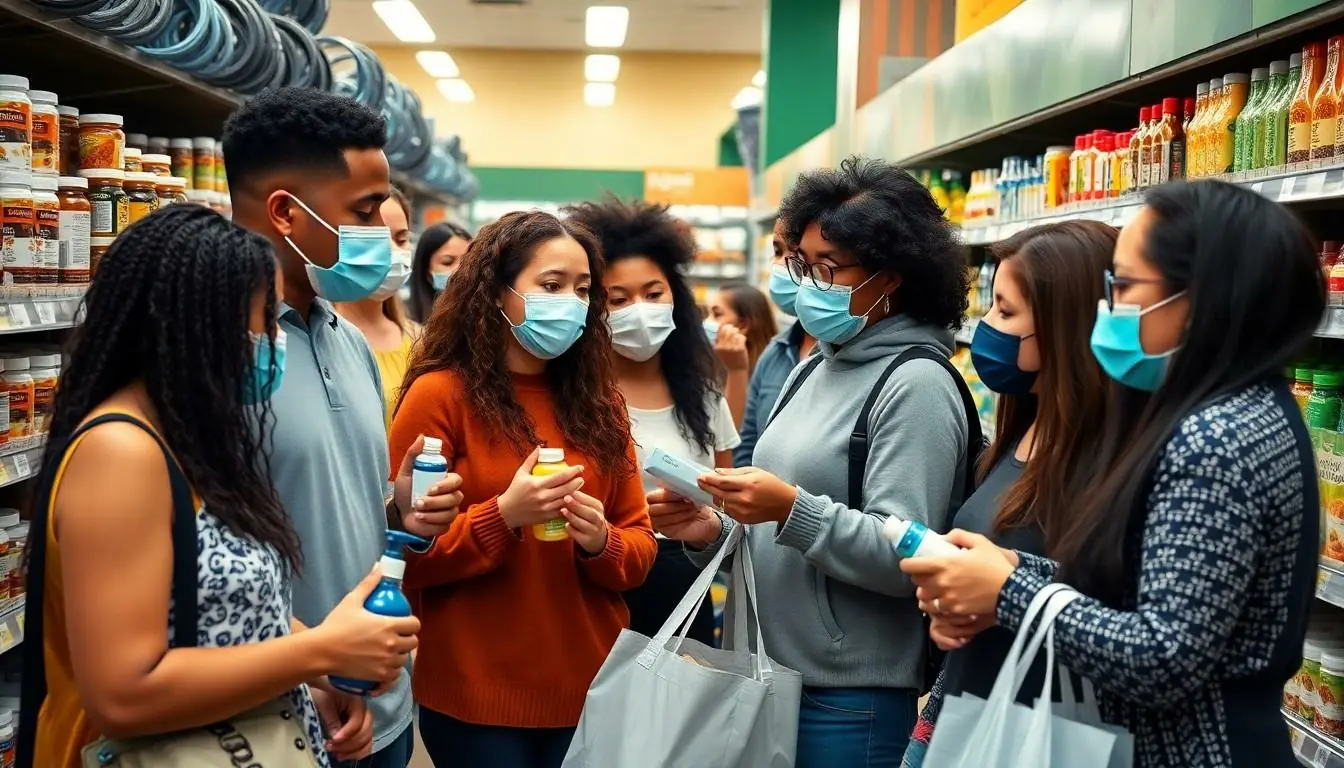The COVID-19 pandemic didn’t just change how we greet each other – it revolutionized the way we shop, spend and save. From panic-buying toilet paper to becoming expert online shoppers overnight consumers transformed their behavior faster than anyone could say “social distancing.”
Consumer patterns shifted dramatically as people adapted to lockdowns and health restrictions. The rise of contactless payments digital shopping and home delivery services created a new normal in retail. What started as temporary solutions evolved into permanent lifestyle changes with many shoppers discovering they actually preferred these new methods of consumption. Now businesses are scrambling to keep up with these evolved preferences while trying to predict what’s next in the ever-changing landscape of consumer behavior.
Table of Contents
ToggleHow the Pandemic Reshaped Consumer Spending Habits
Consumer spending patterns underwent significant transformations during the COVID-19 pandemic, with dramatic shifts in both purchasing methods and product preferences. These changes created lasting impacts on retail landscapes and consumer expectations.
Shift to Digital Shopping Platforms
E-commerce platforms experienced a 44% increase in global digital sales during 2020, with consumers embracing online shopping across multiple categories. Amazon reported a 37% rise in sales while traditional retailers pivoted to digital platforms, expanding their online presence through mobile apps and websites. Grocery delivery services like Instacart saw a 500% surge in order volume, indicating widespread adoption of digital food shopping. Social commerce platforms gained prominence, with Instagram Shopping transactions increasing by 130% and Facebook Marketplace usage doubling during the pandemic period. Digital payment solutions experienced unprecedented growth, with contactless payments rising 150% across major markets.
Stockpiling and Panic Buying Behaviors
Consumer stockpiling created unprecedented demand spikes across essential categories in early 2020. Sales data revealed a 845% increase in toilet paper purchases during March 2020 compared to the previous year. Hand sanitizer sales surged 420% while cleaning supplies experienced a 250% growth in demand. Grocery retailers reported a 215% increase in canned goods purchases with pasta sales rising 185%. Supply chain disruptions intensified these behaviors, leading to widespread product shortages across major retailers. Market research indicated 65% of consumers maintained higher inventory levels of essential items post-initial panic buying phase. Purchase frequency decreased while average transaction values increased 75% during peak stockpiling periods.
Essential vs Non-Essential Purchase Patterns
Consumer spending during the pandemic shifted dramatically toward essential items while discretionary purchases declined. This fundamental change reflected both economic uncertainty and practical limitations during lockdowns.
Focus on Health and Wellness Products
Health-related purchases increased by 300% during the initial pandemic phase in 2020. Consumers prioritized immune-boosting supplements, vitamins D C B-complex experiencing a 175% sales surge. Personal protective equipment dominated shopping carts with face masks sanitizers disinfectants seeing a 1200% growth. Exercise equipment sales rose 170% as gym closures prompted home fitness adoption. Digital health monitoring devices like pulse oximeters thermometers jumped 500% in sales volume. Organic food purchases increased 50% reflecting heightened health consciousness among shoppers.
Decline in Luxury Good Sales
Luxury retail sales dropped 23% globally during 2020. Premium fashion brands experienced a 40% decrease in revenue with formal wear categories falling 78%. High-end jewelry watch sales declined 30% as social events disappeared. Designer handbag purchases fell 56% reflecting reduced travel shopping opportunities. Luxury automotive sales decreased 19% while premium real estate transactions dropped 35%. Beauty luxury products showed resilience with only a 15% decline driven by skincare purchases. Premium electronics maintained stability through increased home office investments showing an 8% growth in select categories.
| Category | Sales Change (2020) |
|---|---|
| Health Supplements | +175% |
| PPE & Sanitizers | +1200% |
| Exercise Equipment | +170% |
| Luxury Fashion | -40% |
| Designer Handbags | -56% |
| Luxury Cars | -19% |
The Rise of Home-Centric Consumer Behavior
The pandemic transformed homes into multifunctional spaces for work leisure entertainment. This shift sparked significant changes in how consumers allocated their time resources at home creating new patterns of consumption centered around domestic life.
Growth in Home Entertainment Services
Streaming services experienced unprecedented growth with Netflix gaining 36.6 million new subscribers in 2020. Digital gaming platforms reported a 115% increase in revenue as consumers sought indoor entertainment options. Virtual fitness subscriptions surged by 250% while online learning platforms registered a 890% growth in user engagement. Home entertainment spending patterns shifted dramatically with:
| Entertainment Category | Growth Rate |
|---|---|
| Streaming Services | +47% |
| Gaming Platforms | +115% |
| Virtual Fitness | +250% |
| Online Learning | +890% |
Surge in Home Improvement Projects
Home improvement retail sales increased by 31.5% as consumers renovated their living spaces. Paint sales rose 40% while home office furniture demand surged 155% during the initial lockdown period. Online searches for DIY projects increased 89% with gardening supplies experiencing a 130% sales boost. Home renovation spending reached these levels:
| Project Category | Sales Increase |
|---|---|
| Home Office Setup | +155% |
| Gardening Supplies | +130% |
| Interior Paint | +40% |
| Overall Home Improvement | +31.5% |
Professional renovation services adapted by offering virtual consultations reporting 67% more remote planning sessions for home projects.
Changes in Brand Loyalty and Price Sensitivity
The pandemic disrupted traditional brand loyalty patterns as consumers prioritized availability over preference. Economic uncertainty led to increased price sensitivity across all consumer segments, resulting in significant shifts in purchasing behaviors.
Trading Down to Private Labels
Private label sales increased 13.7% during the pandemic compared to a 2.8% growth in national brands. Retailers’ own brands captured market share across essential categories, with private label household goods experiencing a 34% sales surge. Store-brand groceries dominated shopping carts, accounting for 25% of total grocery sales in 2020. Consumer preference for private labels persisted post-pandemic, with 71% of shoppers continuing to choose store brands over national alternatives. Market data shows private label products cost 20-30% less than branded counterparts while maintaining comparable quality ratings.
Value-Based Purchasing Decisions
Consumer spending priorities shifted toward products offering clear value propositions during the pandemic. Price comparison activities increased 92% across digital platforms as shoppers researched alternatives before making purchases. Essential items saw a 45% increase in price sensitivity metrics with consumers actively seeking promotional offers. Digital coupon redemption rates rose 27% as shoppers prioritized savings over brand loyalty. Research indicates 82% of consumers now evaluate product necessity before purchase compared to 47% pre-pandemic. Online marketplaces reported a 156% increase in comparison shopping tools usage as buyers sought optimal value.
The Future of Post-Pandemic Consumer Trends
Consumer behavior patterns established during the pandemic continue to evolve, creating lasting changes in shopping preferences and digital engagement. These transformations shape new market dynamics and business strategies across retail sectors.
Hybrid Shopping Preferences
Modern consumers embrace a blend of online and in-store shopping experiences, with 73% of shoppers using multiple channels during their purchase journey. Physical stores integrate digital technologies through smart mirrors, contactless checkouts and virtual product trials. Mobile apps enhance in-store navigation, providing real-time inventory checks and personalized recommendations. Retailers adopt showroom concepts, displaying products for testing while fulfilling orders through digital channels. Data shows 65% of consumers research products online before visiting stores, while 45% use mobile devices to compare prices during shopping trips. Buy-online-pick-up-in-store (BOPIS) services saw a 208% increase in adoption rates, indicating strong consumer preference for flexible shopping options.
Sustained Digital Adoption
E-commerce platforms maintain steady growth post-pandemic, with 82% of consumers continuing their online shopping habits. Mobile commerce accounts for 56% of online transactions, reflecting increased consumer comfort with digital purchasing. Social commerce generates $89.4 billion in annual sales, with 64% of consumers making purchases through social media platforms. Digital payment solutions show persistent growth, with contactless transactions rising 187% year-over-year. Subscription services retain 78% of pandemic-era customers, while virtual consultations remain popular across healthcare, education and professional services. Analytics indicate 92% of first-time digital adopters continue using e-commerce platforms for regular purchases.
Conclusion
The COVID-19 pandemic has permanently transformed consumer behavior across all aspects of daily life. What started as temporary adaptations have evolved into lasting changes that continue to shape the retail landscape. The dramatic shift to digital platforms coupled with new shopping preferences has forced businesses to innovate and adapt rapidly.
These behavioral changes extend beyond shopping habits to encompass broader lifestyle modifications including home-centric activities entertainment choices and financial decisions. As consumers continue to embrace this new normal businesses that understand and adapt to these evolving preferences will be better positioned for success in the post-pandemic marketplace.




